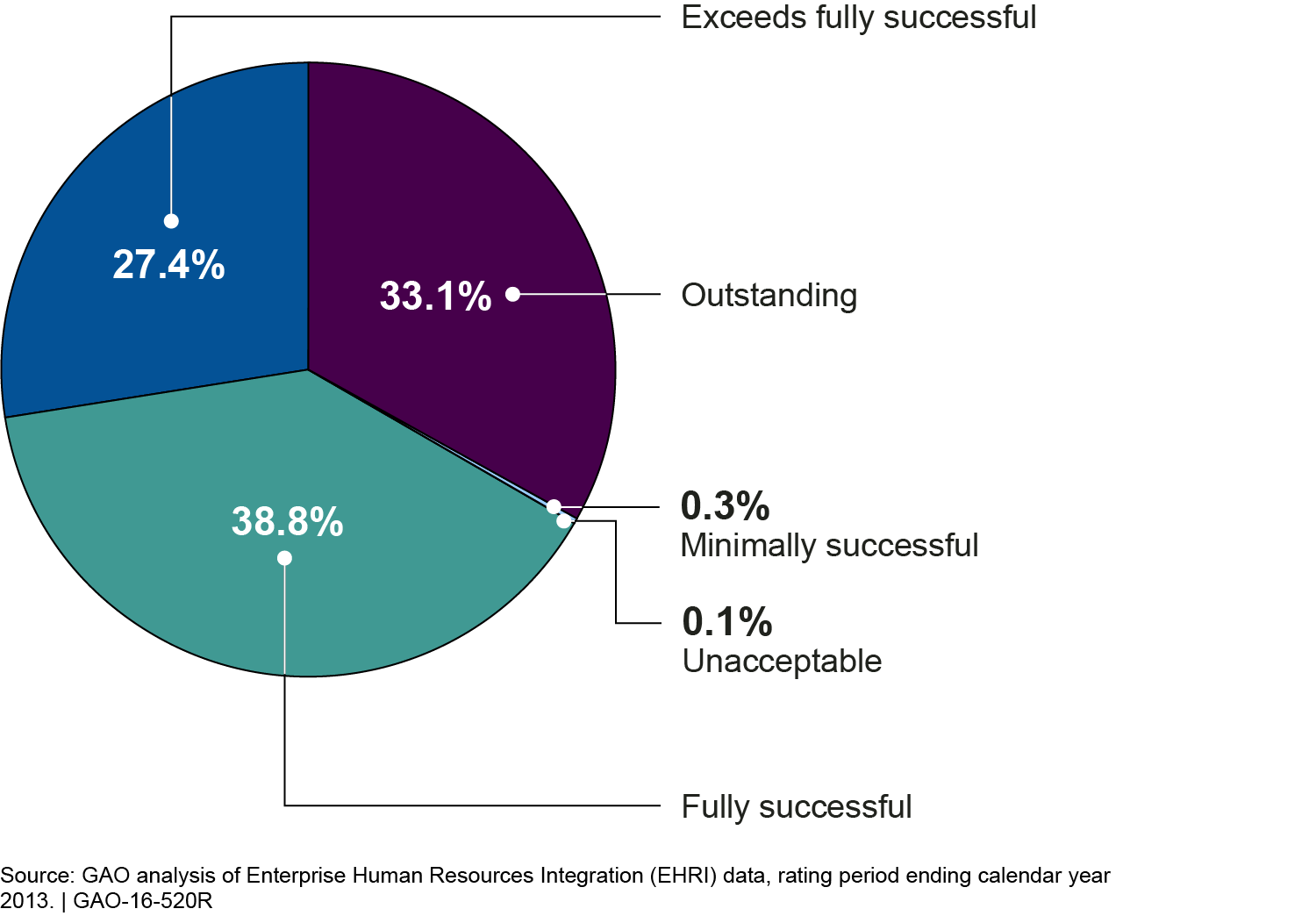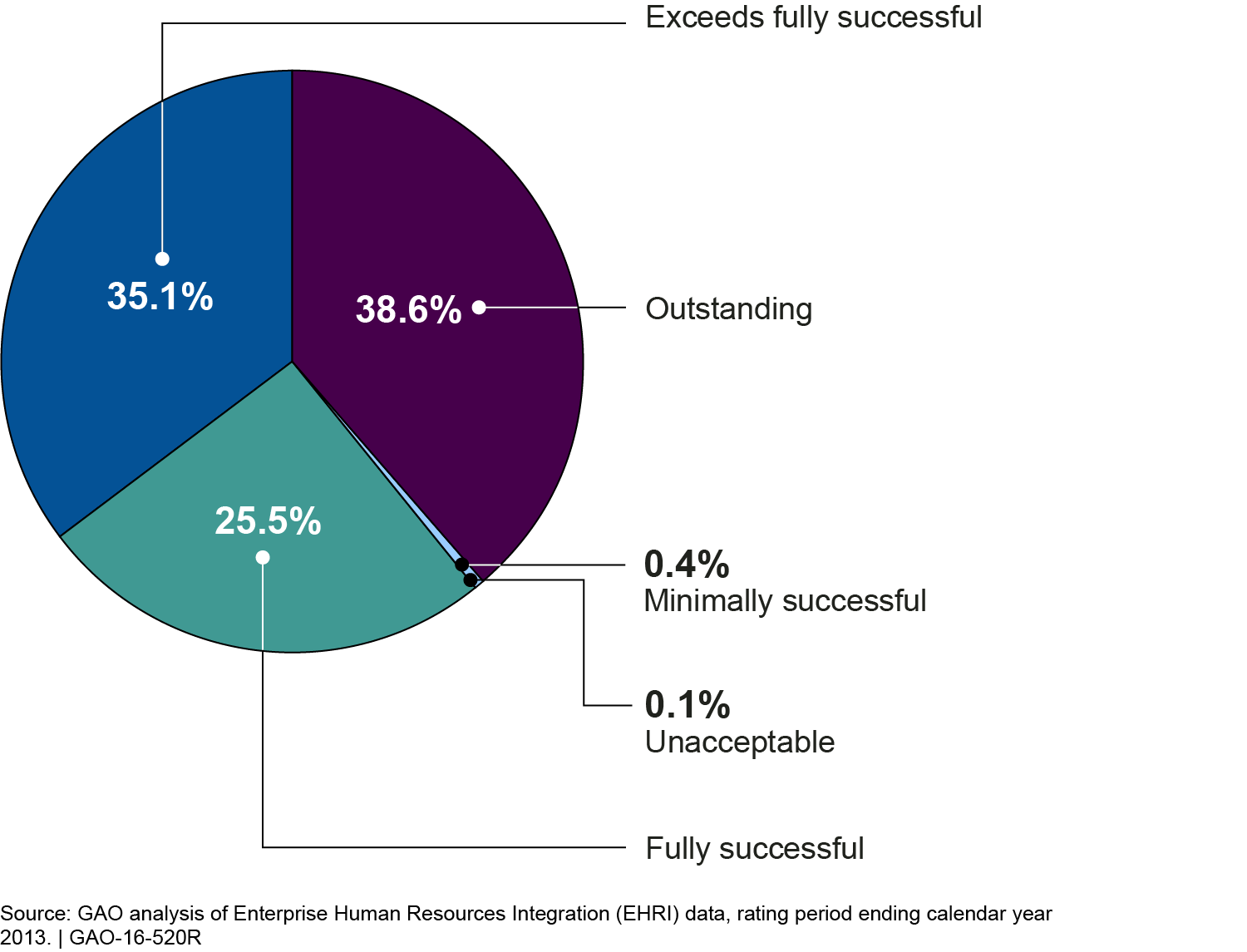Federal Workforce: Distribution of Performance Ratings Across the Federal Government, 2013
Highlights
What GAO Found
In calendar year 2013 (the most recent data available at the time of our review), of approximately 1.2 million permanent, non-Senior Executive Service (SES) employees at the 24 Chief Financial Officers (CFO) Act agencies, GAO found that about 71.4 percent (or about 836,900 employees) were rated using a 5-level performance appraisal system. This was followed by a 2-level pass/fail system (about 12.7 percent), 3-level system (about 9.4 percent), and 4-level system (about 6.2 percent).
As figure 1 shows, about 99 percent of all permanent, non-SES employees received a rating at or above “fully successful” in calendar year 2013. Of these about 61 percent were rated as either “outstanding” or “exceeds fully successful.”
Figure 1: Permanent, Non-Senior Executive Service Employee Performance Rating Outcomes (All Rating Systems, Calendar Year 2013)

Note: N = 1,171,400 permanent, non-Senior Executive Service employees (rounded to nearest 100). Numbers may not add to 100 percent due to rounding.
In addition, about 74 percent of employees under a 5-level appraisal system—the most commonly used system—received a rating of “outstanding” or “exceeds fully successful,” as shown in figure 2.
Figure 2: Permanent, Non-Senior Executive Service Employees by a 5-Level Performance Appraisal System and Rating Outcomes (Calendar Year 2013)

Note: N = 836,900 permanent, non-Senior Executive Service employees (rounded to nearest 100). Numbers may not add to 100 percent due to rounding
Moreover, GAO found that about
-
60 percent of employees in administrative, professional, and technical occupational groups were rated as either “outstanding” or “exceeds fully successful”; and
- 78 percent of General Schedule (GS)-13 through GS-15 employees and 67 percent of GS-9 through GS-12 employees were rated as “outstanding” or “exceeds fully successful.” GS employees in grades 1 through 8 were more often rated as “fully successful” (38.8 percent), followed by “outstanding” (32 percent).
Why GAO Did This Study
In 2003, GAO identified a set of key practices for effective performance management. Among other things, GAO noted the importance of making meaningful distinctions in performance ratings. Such distinctions are the starting point for candid and constructive conversations between supervisors and staff; add transparency to the ratings and rewards process; and help employees better understand where they are doing well and where improvements are needed.
Under federal law and corresponding regulations, agencies are required to develop at least one employee performance appraisal system based on one of eight rating patterns. These appraisal systems range from a 2-level (pass/fail) system to a 5-level system that measures employee performance from “unacceptable” to “outstanding.”
For this study, GAO was asked to review performance management systems for non-SES employees across the 24 CFO Act agencies. This report describes (1) the types of performance management systems agencies use to assign performance ratings; and (2) the overall distribution of performance ratings for permanent, non-SES employees.
To address these objectives, GAO analyzed OPM data for calendar year 2013—the most recent data available at the time of our review. GAO determined which performance rating systems are most often used by the CFO Act agencies and identified performance rating distribution trends by occupational and other groupings.
Recommendations
GAO is not making any recommendations in this report.
